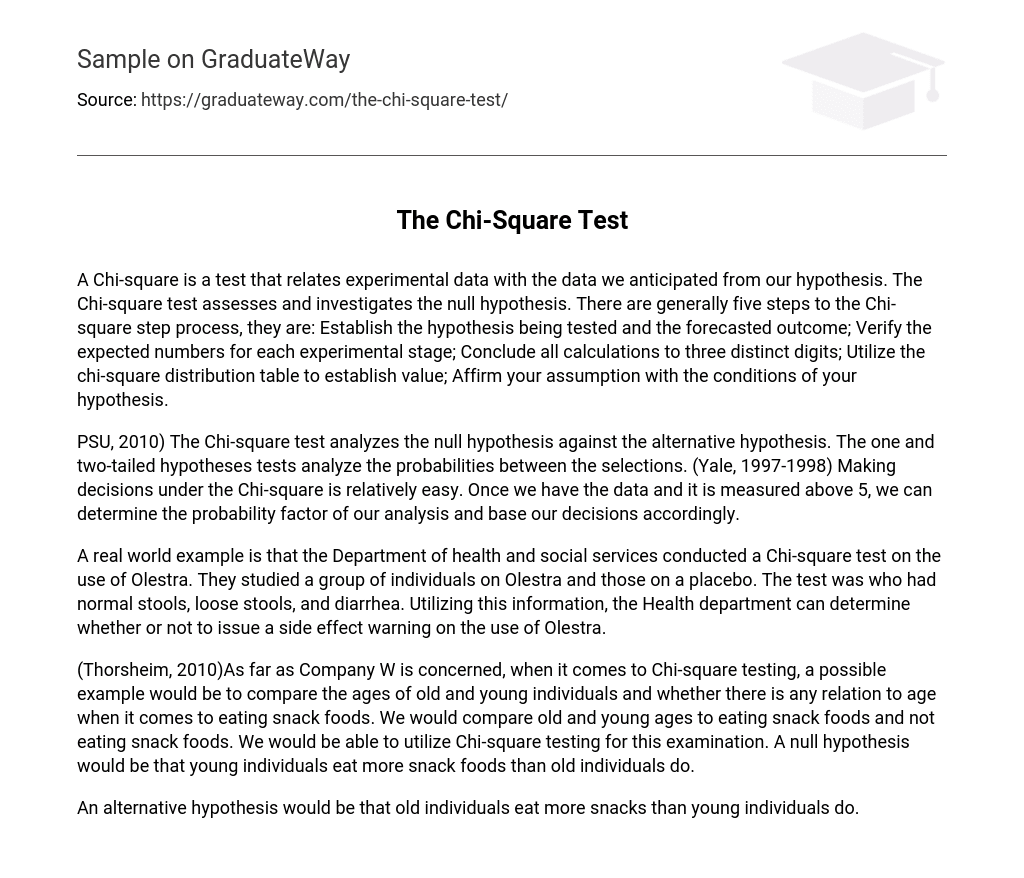A Chi-square is a test that relates experimental data with the data we anticipated from our hypothesis. The Chi-square test assesses and investigates the null hypothesis. There are generally five steps to the Chi-square step process, they are: Establish the hypothesis being tested and the forecasted outcome; Verify the expected numbers for each experimental stage; Conclude all calculations to three distinct digits; Utilize the chi-square distribution table to establish value; Affirm your assumption with the conditions of your hypothesis. PSU, 2010) The Chi-square test analyzes the null hypothesis against the alternative hypothesis. The one and two-tailed hypotheses tests analyze the probabilities between the selections. (Yale, 1997-1998) Making decisions under the Chi-square is relatively easy. Once we have the data and it is measured above 5, we can determine the probability factor of our analysis and base our decisions accordingly.
A real world example is that the Department of health and social services conducted a Chi-square test on the use of Olestra. They studied a group of individuals on Olestra and those on a placebo. The test was who had normal stools, loose stools, and diarrhea. Utilizing this information, the Health department can determine whether or not to issue a side effect warning on the use of Olestra.
As far as Company W is concerned, when it comes to Chi-square testing, a possible example would be to compare the ages of old and young individuals and whether there is any relation to age when it comes to eating snack foods. We would compare old and young ages to eating snack foods and not eating snack foods. We would be able to utilize Chi-square testing for this examination. A null hypothesis would be that young individuals eat more snack foods than old individuals do.
An alternative hypothesis would be that old individuals eat more snacks than young individuals do.





